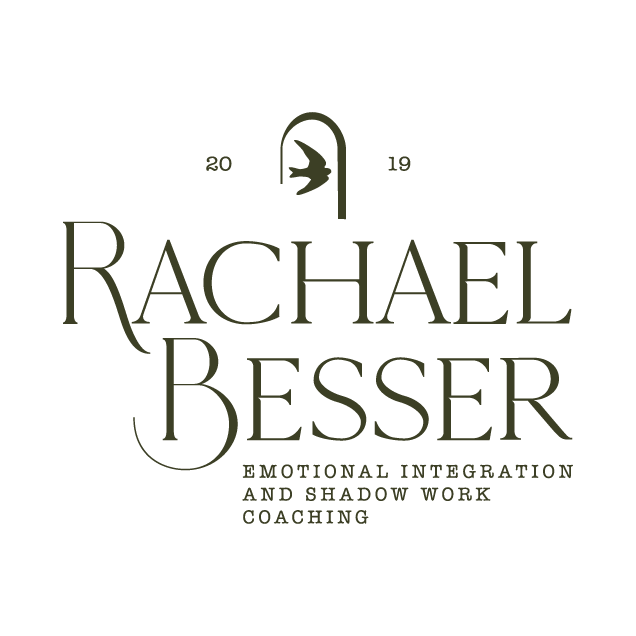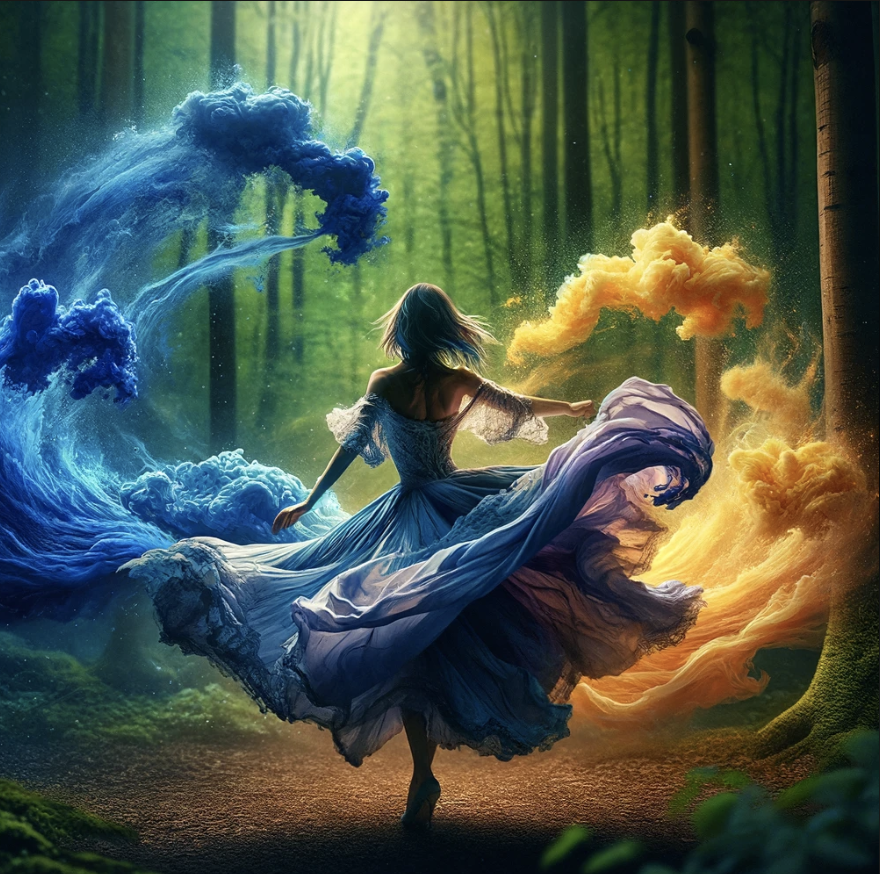Decoding Our Emotional Palette: The Functions of Fear and Pain
When we experience an emotion, what we're truly feeling is often a mix of more primary emotions. You can imagine it like colors on an artist's palette. Every shade and tint is derived from primary colors combined in various ratios. Similarly, our unpleasant emotional responses can often be boiled down to two primary "colors" or energies: fear and pain.
1. Fear: The Forward Pull
Imagine standing at the edge of a cliff, peering over into the unknown. That feeling of anticipation, of wondering "What if I fall?", is fear in action. Fear is future-oriented, a fast-moving energy that steals our mind away from the present. Whether it's the fear of a potential threat or the anxiety of a possible future scenario, fear propels us outward. It's a seeking energy, searching for confirmation or a solution to avoid that which we are afraid of having confirmed.
For example: Jane recently started a new job and has been trying to befriend a colleague named Lisa. One day, Jane decided to text Lisa inviting her for coffee after work, but Lisa never responded. As time went on, Jane began to notice a fluttering and churning sensation creeping into her stomach. This was followed by a creeping chill that seemed to rise up her spine. Her chest tightened and her heart raced. When she brought her awareness inward, Jane noticed the emotion presenting in her mind’s eye as a fast-moving grey swirl, coarse in texture, similar to rushing water in a turbulent stream.
Jane's thoughts spin out of control: "What if Lisa has already decided she doesn't like me?" or "What if the whole office has negative opinions about me?" This is the energy of fear embodied.
2. Pain: The Depth Within
(PAUSE. It’s important for me, the writer, to distinguish to you, the reader, that even though we’re talking about “pain” in this article, we are only talking about emotional pain tied to subjective experiences like rejection or abandonment, not physical pain due to mystery illness, injury, or anything of the like. Yes, there is plenty of literature on emotions manifesting as physical pain in the body, but we aren’t talking about that; nor do I ever want this piece of writing / any of my work to be used as inspiration to ignore your body’s cues and gaslight yourself into not seeking out proper medical attention when that is clearly what your body might be asking for. Okay? Okay. You may proceed!)
On the other hand, pain pulls us inward. It's not the fleeting worry of what might happen, but the heavy and sometimes disorienting recognition of what has happened. Pain does not pull our minds away from the present; rather, it anchors us firmly within it (so long as we have the window of tolerance to stay with it. If not, this is where dissociation or numbing tendencies enter!). This is the "I am" emotion - it's grounded in identity, confirming our fears and announcing, "This is what your life is. This is who you are now."
For Example: Jane has been dating Mark for several months. Over the past week, Mark has been distant. One evening, he finally speaks up and tells her, "Jane, I don't want to be with you anymore." Immediately, a deep, aching sensation grips her chest, warm and burning. It feels as if an intense weight is pressing down on her, causing stagnation; a feeling of being "stuck" or "paralyzed." This sinking feeling pulls her downwards, as though into a deep abyss. Psychically, she senses the burning grip in her chest as a deep, sharp red, almost black, color. The sensation reminds her of a heavy block, jagged like broken glass.
Her mind translates these feelings to thoughts like "I am unlovable", "I always ruin relationships", or "I am not enough for someone to stay." This is the embodied energy of emotional pain.
3. The Dance of Fear and Pain
In fear, we're in motion, actively pursuing or avoiding an outcome. With pain, that outcome has materialized (either perceptually or literally). There's a certain finality, a loss of control. While fear keeps us on our toes, pain plants our feet firmly on the ground, asking us to confront our new reality. In my personal opinion, the most poignant distinction between fear and pain is that one has us desperately grasping for our final threads of control while the other forces us to confront our own powerlessness, even if we weren’t ready to do so.
Now, this is where things get complicated. When we’re dealing with emotional blockages, fear and pain rarely exist independently of one another. They tend to blend together, shaping the nuances of our emotional landscape. When fear acts as the anticipation of abandonment or rejection, one part of us exists in a reality where we can still control or avoid an outcome, allowing us dodge or lessen the amount of pain we might feel. On the other hand, when we are actively in pain, part of us is in a reality where the act has been confirmed and we are forced to reconcile with a new (or familiar) life, or aspect of life.
For example, when we’re projecting anxious attachment wounds onto our current partner, we would be in both fear (evidenced by the use of behaviors like controlling or avoidant tendencies) and pain (evidenced by reactivity or sensitivity). This means that there are two separate parts of us (that often live in the Shadow until consciously invited out) who, by design, are in argument with each other. Not just any argument, either — usually it’s the kind of argument that causes us to oscillate between relentless problem solving and utter helplessness. If you have ever experienced the kind of mental rollercoaster where, in one moment you’re in the bargaining stage of grief, and in another moment you’ve completely lost all hope, you know how miserable and disorienting it can be.
4. Somatic Strategies For Fear and pain
Knowing the primary "colors" of our emotional experiences gives us the tools to more effectively digest emotional blockages and break out of painful/scary loops. The below tips are based off of my personal experience with practitioners/on my own, as well as working with my own clients:
For fear, it's usually about letting the body pass the energy with intuitive movement. Whether it's physical exercise or mentally engaging in a hobby, redirecting that fast-moving energy helps the nervous system digest it. Upregulating activities like cardio or shaking exercises are wonderful for this!
Pain demands a nuanced approach and can often be more intricate. What I've observed to be most effective is either drawing close to the emotion, allowing ourselves to fully be 'with' the rawest form of the energy (that is, leaning into it without identifying with it). At other times, using resourcing tools (such as equalizing) to counterbalance its depth proves more beneficial. In practice, it's usually a balance between the two.
Still not sure? Book a 1:1 session with me and we can create a customized sequence to you!
Tip: If you're feeling overwhelmed by an emotion, ask yourself: Is this fear, pain, or a mix of both? Understanding the ratio can guide your response. When in doubt, just experiment! Your body knows what to do; all we have to do is get out of its way.
5. Conclusion
Our emotions, no matter how complex, can often be distilled to these two primary energies. By recognizing the play of fear and pain in our experiences, we empower ourselves with knowledge, discerning the best tools and tactics to navigate our emotional journeys.






